How the Smartphone Loosed Applebee’s Dread Grip Over the American Road Trip
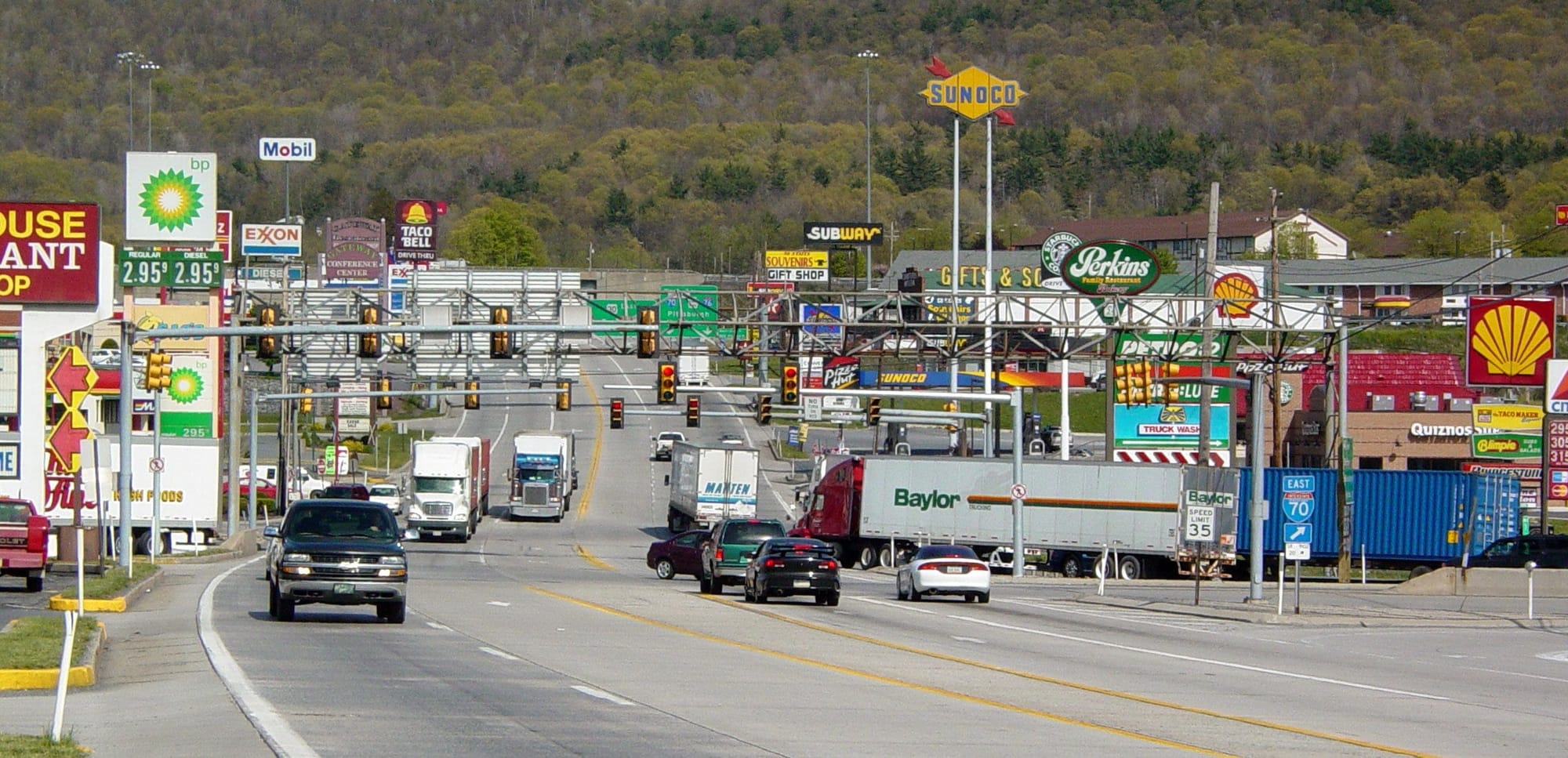
I am a technology skeptic. Sometimes I think we really would have been better off if we had forgotten all about leaving the ocean, and had instead remained cheerful filter feeders at the bottom of a tropical sea.
But I’ll admit to this: smartphones have made the American road trip a much more delicious experience. The smartphone may also be at least partially responsible for the slow and unseemly death of the casual dining chains that used to sprout up beside American highway exits like mushrooms after a rainstorm.
Let me explain.
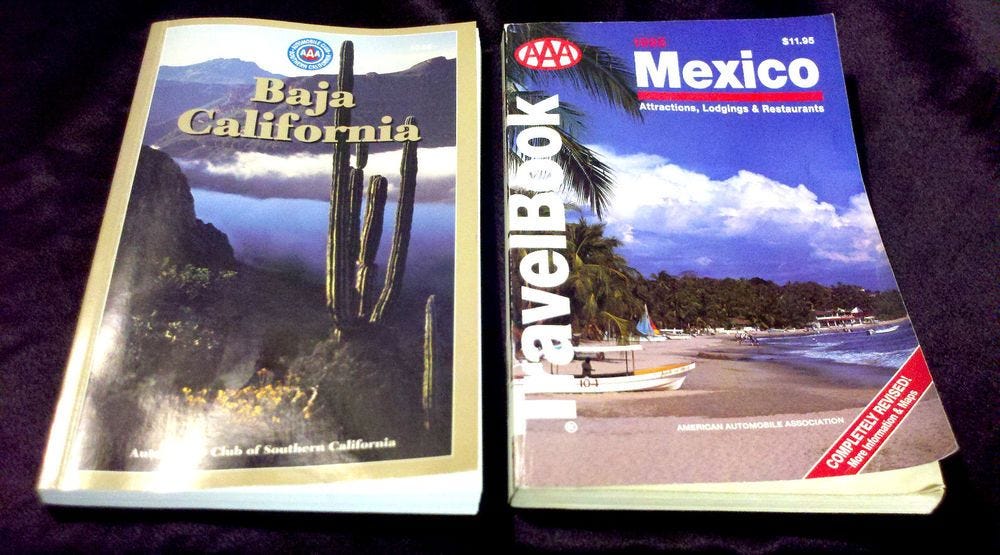
Back in the 1990s and early 2000s, people would drive across the entire goddamned country without smartphones. When I was a child, my parents and grandparents kept large spiral-bound AAA guides to American roads in the trunk of the car, which inevitably grew yellow and crackly in the heat of summer. We dreaded missing a road sign or an exit. I had nothing but taste-bud-destroying Warheads candy and half a dozen print books about dinosaurs devouring each other for entertainment. Sometimes, out the window, one might see a horse. It was a dark time.
Worst of all was the Food Problem.
Before we all had the Internet in our back pocket, road trips were a perilous game of culinary roulette. When you got hungry on the road, you were cast adrift without an oar or a guide, in an unknown and potentially hostile place. You couldn’t check Yelp or Google Maps to zero in on the nearest restaurant that had promise in a place you’d never been before.
While handy written guides and websites like RoadFood had become more common by the 1990s, visiting these famous eateries required advance planning and foresight, and probably printing something out - like a feral animal, or a feral animal with a printer.

Sure, you might get lucky, and stumble upon the kind of place owned by a quirky culinary genius that Guy Fieri would be highlighting on television in about ten years or so. But danger – or at least, indigestion and regret - lurked behind every corner.
Some people think this old way of eating on the road was romantic. “It was such an adventure, driving into small towns and eating wherever looked good!” they’ll burble. “We didn’t have to do all of this planning.” They say they remember trips filled with pleasant little small town eateries. They believe that the United States has always been plentifully supplied with sparkling diners and sassy waitresses, all instantly accessible within 5 minutes of the interstate.
I think they are wrong.
That’s because in the 1990s, on road trips, we mostly ended up at eating at Chilis. Sure, sometimes it was a Waffle House in the deep South, rising romantically out of the mist in between thunderstorms. Sometimes it was at a Burger King, or a Dairy Queen, or a Taco Bell.
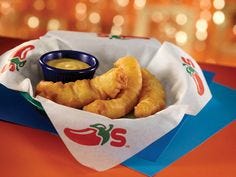
It was not what my parents wanted – they are people who like finding interesting food just as much as I do. No, we did not love Chili’s, or at least, I stopped loving it, after I got old enough to want more out of life than a half-decent chicken finger basket and a paper placemat with a free box of crayons. We were, like most Americans, simply stuck with Chilis and other casual dining restaurants of its ilk, from Applebees to Denny’s to Ruby Tuesday.
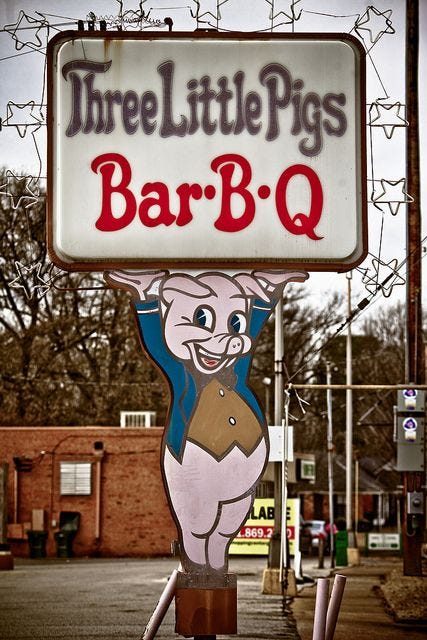
We could have gone into town to look for something better to eat, relying on visual cues like a barbeque restaurant sign with a suspiciously happy pig wearing a little human outfit (which is what my father swears by).
But this is America, where freeways often exit into the far-ass end of exurbs. And even when you do drive into a place cold, there’s no guarantee that the first eatery you encounter with mildly-charming signage that purports to serve food will be any good. When we were forced to navigate with our eyes alone – like a hunting falcon, or a lion on the Savannah looking for zebra – our accuracy rate was only OK.
That’s because in the United States, for every delightful meat-and-three with lovingly-preserved décor from 1962 and excellent fried okra, there’s a place owned by a frustrated member of the local car-dealership magnate’s family. There is a pit of despair where the salad is slimy, the menu is dotted with unpleasant puns, and every dish is microwaved in the back without the corporate care and standardization that an Olive Garden might bring to the proceedings.
In the pre-Internet era, from the roadtripper’s perspective, people in off-freeway kitchens could have been up to any kind of freaky shit in there, from clipping their toenails to carefully licking every single piece of chicken before it went on the plate. We would never have been the wiser. The land of opportunity, when approached without prior knowledge, mostly tasted like microwave. If you were lucky.
And so, when my parents needed a break somewhere that wasn’t a car or a fast food restaurant, we ate at Chilis. It was easily identifiable, present approximately every 40 miles, and you’d be able to get a salad. Someone would have probably cleaned the bathroom.
It was these factors – proximity to an exit, predictability, sanitation standards – that gave America’s casual dining restaurants such a hold over travellers. They had a captive, guaranteed audience of people who needed to eat while driving somewhere. It was the best we could hope for.
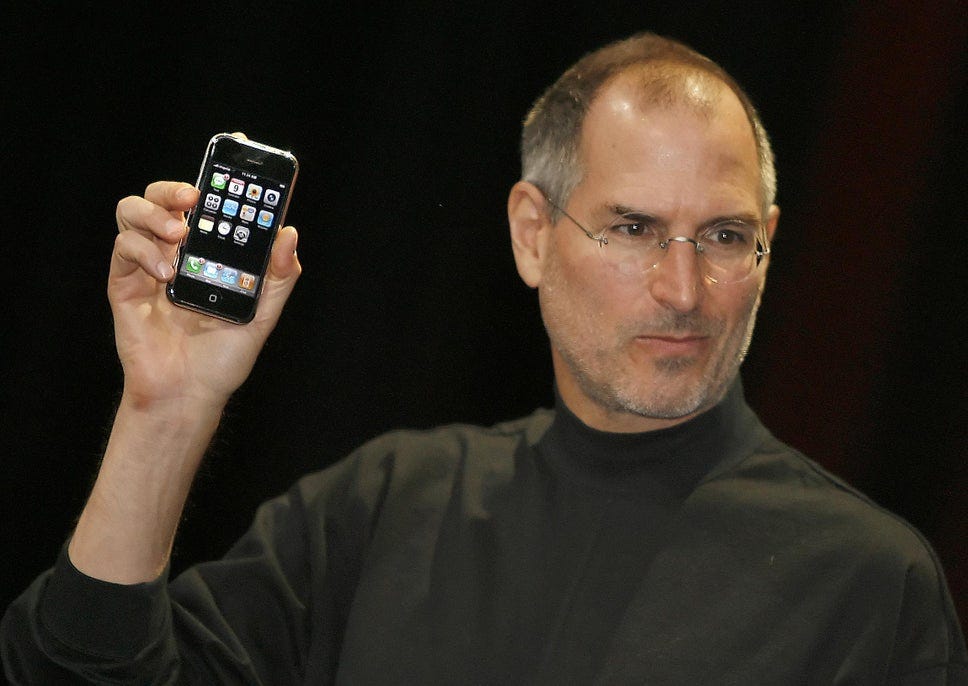
And then the smartphone arrived in 2006, followed hot on its heels by the Great Recession, a miserable body blow to America’s already struggling middle class.
The great casual dining restaurants of the 20th century have been in decline ever since.
The economic reasons for this have been well covered elsewhere. As wages stay flat and the cost of living and housing continues to rocket to the moon, the average human being who might have patronized their local Ruby Tuesday on the weekend or on the road is staying home instead. Many lower-earning people – especially younger people – have somewhat higher standards for food than they used to: if they’re going to spend money to eat out at a full-service restaurant as a special treat, they’d rather pay for quality, not Olive Garden breadsticks.
If they want agreeable-tasting calories quickly, they have a sea of decent fast-casual options to choose from. (We can probably partially credit the rise of the Food Network and ubiquitous food-centric TV for raising the consciousness of the average American’s palate, too).
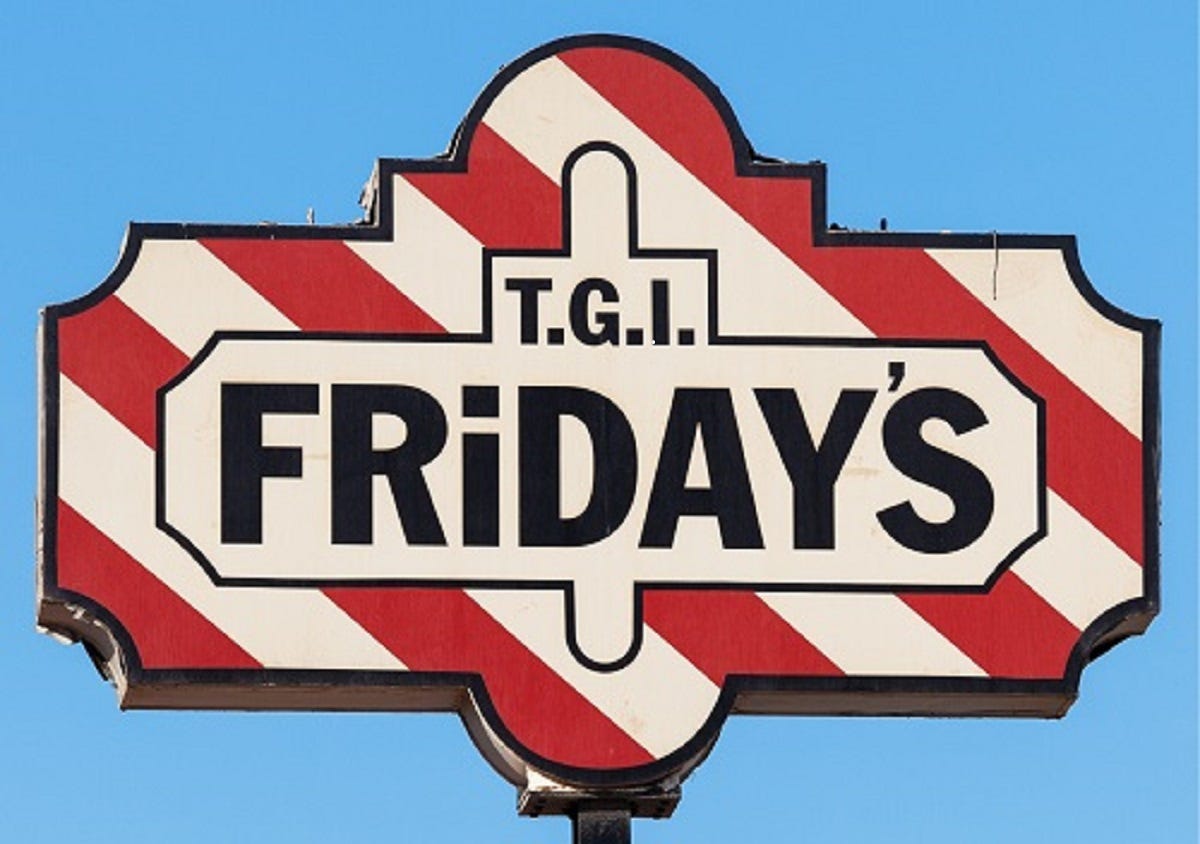
Meanwhile, wealthier people who can afford to eat out regularly are now too attached to eating regional Portuguese food and freshly-killed yellowtail haunches to spend their money at a sit-down place where the wait staff wear flair and everything has a carb in it. The days of well-off young professionals hanging out at T.G.I Friday’s to look for eligible singles (for dating was a key rationale behind the invention of the “fern bar” casual dining joint back in the 1970s) are very much behind us.
Rather less discussed is the technological aspect of the situation.
Thanks to the smartphone and the Internet, America’s travellers are no longer contained by the minimally viable food options of the nearest exit. An entire, far more interesting world of stuff to eat sits at our fingertips. Formerly captive audiences on a roadtrip, like me and my parents, now can very swiftly find somewhere genuinely good to eat everywhere we go on the planet with approximately three or four minutes of Internet research.
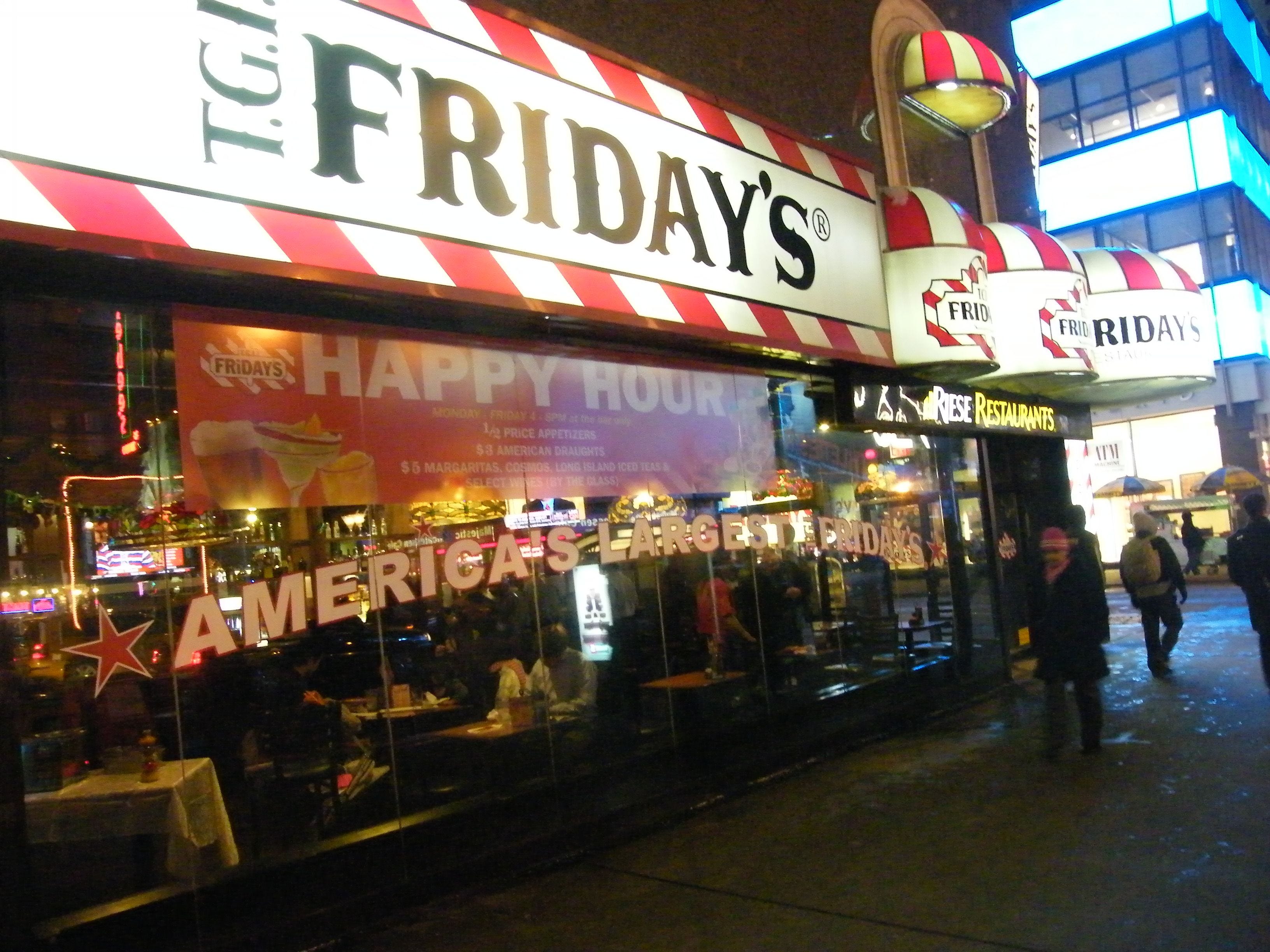
I haven’t had to resort to eating at a Chilis or an Applebee’s since 2006, and I can barely remember the flavour of the ubiquitous Chicken Crisper. With my smartphone, I have found excellent Korean food in New Hampshire, a swampy Georgia backwoods bar with an alligator-skull ring toss, top-notch Burmese food in Vermont, and an entire sea of small-time taquerias, pho restaurants, and low-profile meat-and-threes, all across America. This is good for us, and it’s also, I’d have to assume, good for the restaurants as well.
Christ knows that websites like Yelp, TripAdvisor and Google Maps have their flaws – like nastily pressuring small businesses, fake review farming, and userbases full of nitpicky little freaks who will condemn a restaurant for crimes like “seasoned our food appropriately,” “didn’t serve me the 40 lemon slices I wished to devour like a Eldritch citrus monster,” and “refused to play OANN at ear-shattering volume.” But these websites are still the best tools I know of for getting a baseline sense of what a restaurant is about. (Hint: pay the most attention to the pictures of the food).
Perhaps most importantly, the reviews on these websites are also a invaluable (if inherently incomplete) source of information on how safe a restaurant is. Is it owned by bigots who stare down any non-white or visibly LGBTQ person who enters the premises? Did a bunch of people end up with food poisoning after ordering the honey-basted all-you-can-eat shrimp (and how sorry do you feel for them)? Are the owners frothing anti-vaxxers and anti-maskers who are spreading the good word of Covid to every unprotected lung in the tristate area?
Smartphones make it easier to find that shit out at short notice than it has ever been before in history.
While some might claim that using a smartphone to find great local places to eat everywhere you go is some sort of fancy hipster affectation, here’s another thing: these local places are often cheaper than a meal at a Chilis, an Applebees, or even a Subway would be. A $7 meal of al pastor tacos and fresh-made salsa made by a strip-mall taqueria that I’d never have found on my own beats out a $12 meal of pre-fab Chili’s tacos every time.
A little family-owned burger and root beer float place in the ass-end of the Utah desert that I’ve identified on Google Maps will probably be both more delicious and more economical than popping into the next Wendy’s that presents itself on the freeway. And I have a lot more confidence that the money I’m spending at those places is going back into the local economy to at least some extent, instead of a gigantic corporate entity.
The pandemic has, I’d argue, made the Internet an even more vital resource for figuring out where to eat, and where to spend our money. Thousands of restaurants have closed their doors, either temporarily or permanently, since March 2020, and sales have tanked as most people (wisely) avoided eating indoors.
Workers in the food industry were at more risk of dying from Covid than workers in any other industry. In the earlier days of the pandemic, I relied heavily on restaurant review websites and social media to figure out which of the take-out places I patronized were enforcing masking policies and treating their workers humanely.
Now, in the summer of 2021, many asshole restaurant owners – both from chains and from small business- are complaining that they “can’t find anyone who wants to work” for the skimpy wages they’re willing to offer. When I go out to eat nowadays, I need to balance my desire to support local businesses against my desire to not give a single solitary penny to restaurants owned by miserable worker-exploiting jerks.
Here, too, the Internet has come in handy: by reviewing a combination of restaurant review websites, Twitter, and Instagram, it’s easier than ever to avoid eating at places owned by exploitative assholes.
So this, then, is one of the consolation prizes that smartphones and the Internet have given us, in exchange for the hellworld of disinformation, distraction, and big tech that we live in today. The world is burning, but at least I can find better places to eat.
